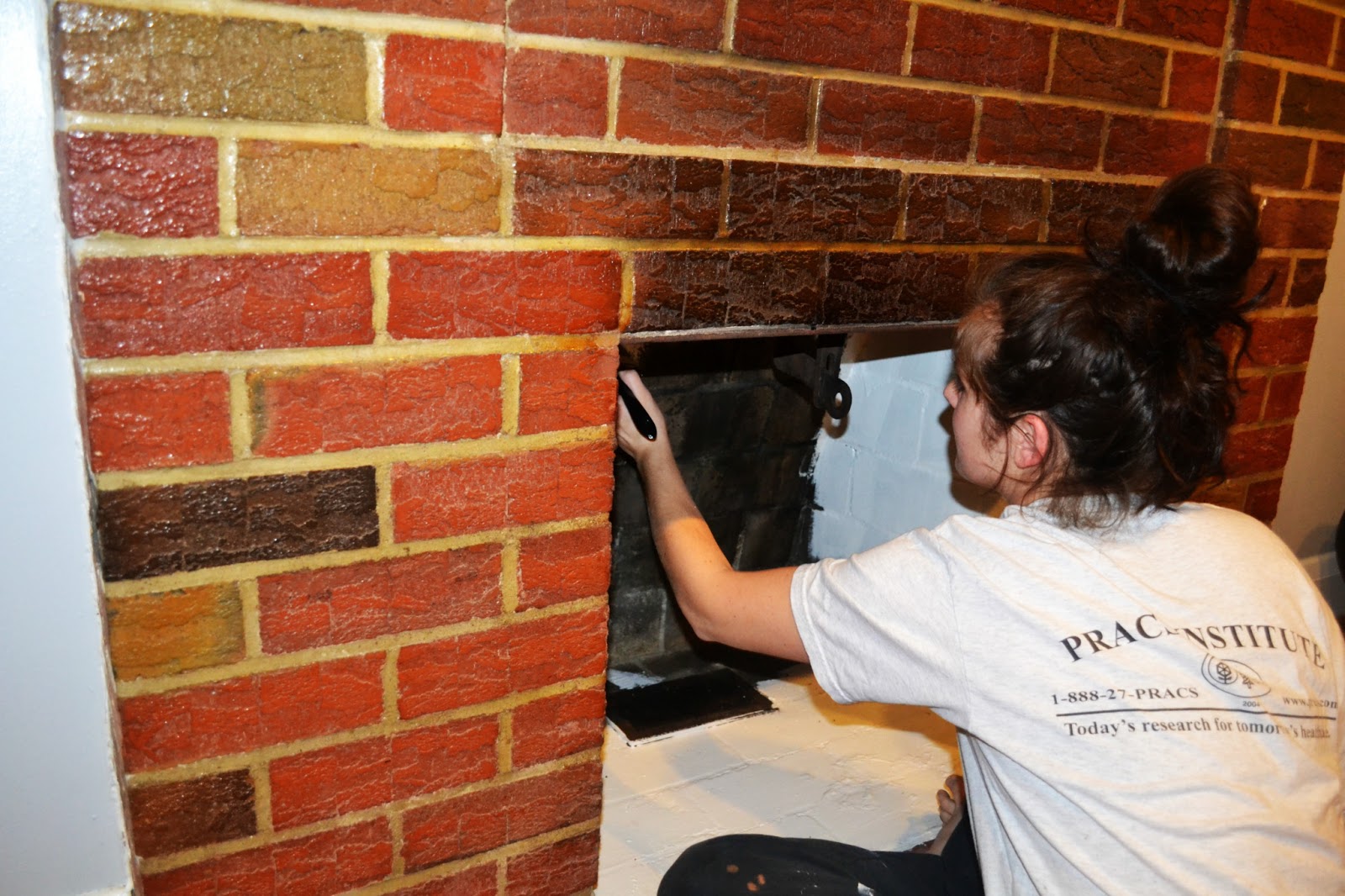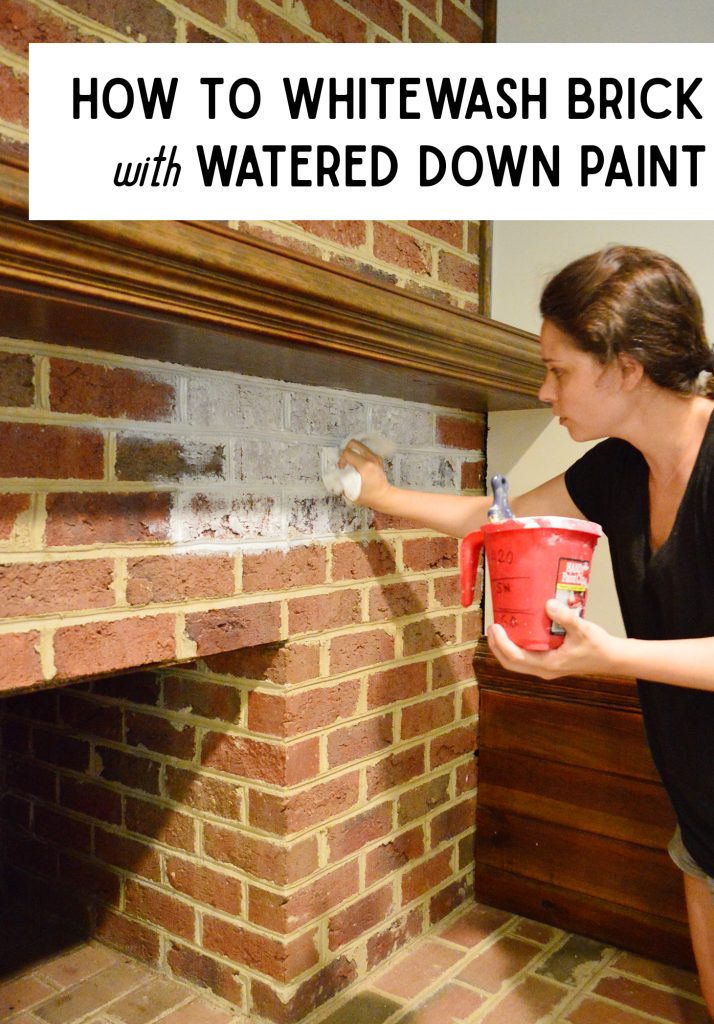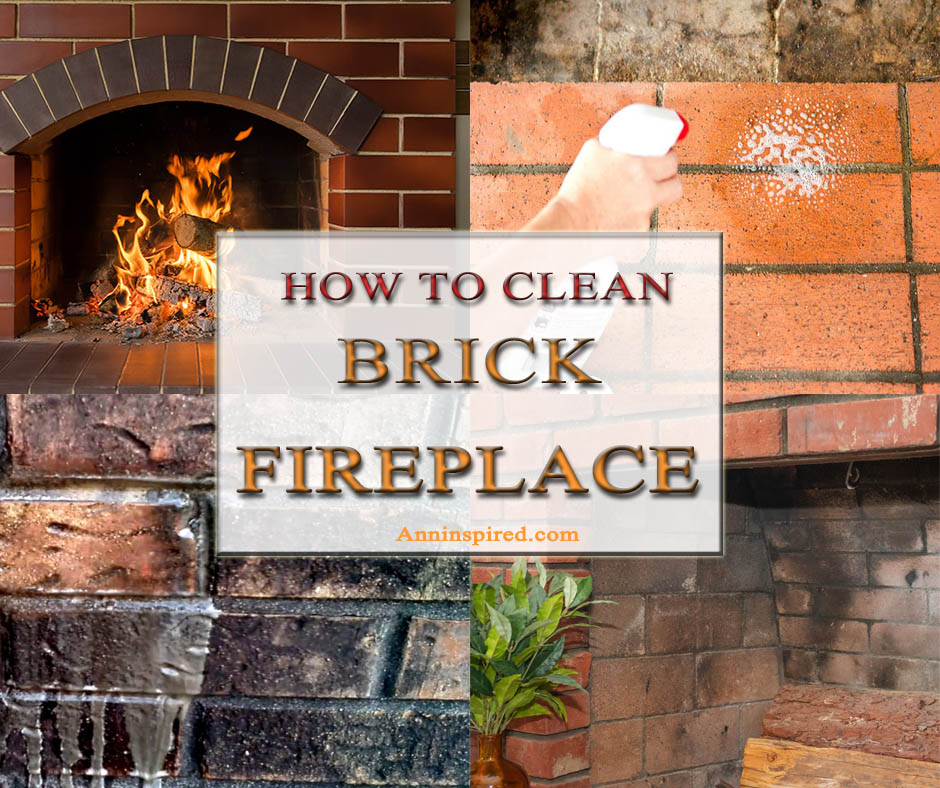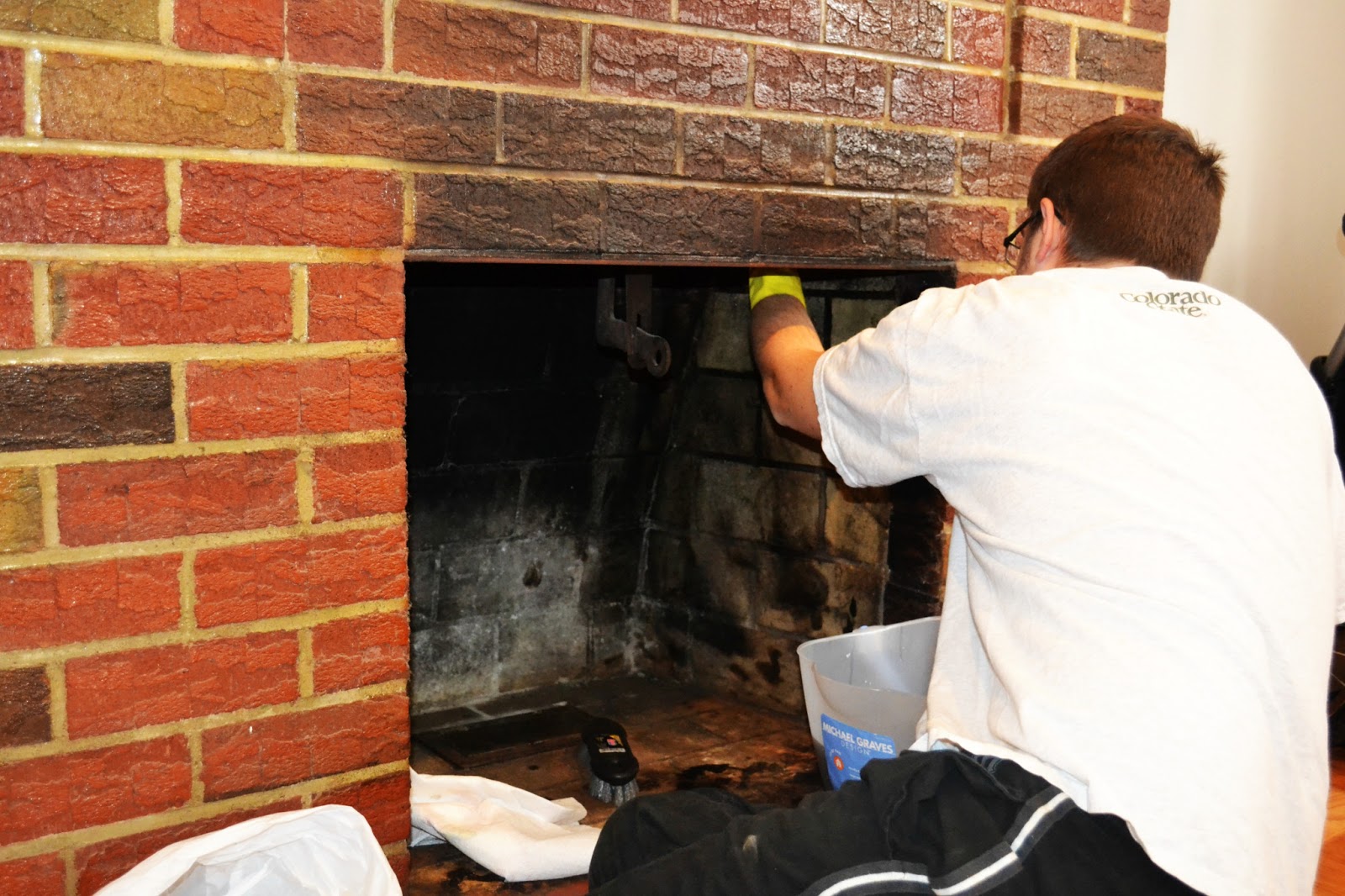Cleaning red bricks on a fireplace can be a rewarding task that rejuvenates the focal point of your living space. Over time, soot, ash, and grime can accumulate on the bricks, diminishing the fireplace’s aesthetic appeal. A thorough cleaning not only restores the bricks’ natural beauty but also prolongs their lifespan. This article outlines the steps to effectively clean red bricks, ensuring your fireplace remains a charming and cozy feature in your home.

Understanding Your Fireplace Bricks
Types of Fireplace Bricks
Fireplace bricks come in various types, each with unique characteristics. The most common are clay bricks, which are known for their durability and ability to withstand high temperatures. Some fireplaces might also feature refractory bricks, which are specially designed to endure extreme heat. Understanding the type of bricks in your fireplace is crucial because it influences the cleaning methods and products you should use to avoid damaging the surface.
Brick Porosity and Its Implications
Red bricks are naturally porous, meaning they can absorb liquids, which can lead to staining. This porosity also means that cleaning solutions can penetrate deep into the bricks, effectively removing grime. However, it’s essential to avoid using overly harsh chemicals that could erode the brick’s surface or cause discoloration. Recognizing the porous nature of your bricks helps in choosing the right cleaning agents and techniques.
Common Stains on Fireplace Bricks
Fireplaces are prone to a variety of stains, including soot, ash, creosote, and general household dirt. Soot and ash are byproducts of burning wood and can create a dark, greasy layer on the bricks. Creosote, a tar-like substance, can also accumulate, especially if the fireplace isn’t regularly maintained. Each type of stain requires a different cleaning approach to ensure thorough removal without damaging the brick surface.

Assessing the Brick Condition
Before starting the cleaning process, inspect the condition of your fireplace bricks. Look for signs of wear, such as cracks, chips, or crumbling mortar. Damaged bricks may require repairs before cleaning to prevent further deterioration. If the mortar joints are significantly eroded, consider repointing them to ensure the structural integrity of the fireplace. A well-maintained fireplace not only looks better but is also safer to use.
Safety Precautions
Safety should be a priority when cleaning fireplace bricks. Ensure proper ventilation by opening windows and doors to disperse any fumes from cleaning agents. Wear protective gear such as gloves, goggles, and a mask to protect yourself from dust, debris, and chemical exposure. If using commercial cleaning products, follow the manufacturer’s instructions carefully to avoid accidents or skin irritation.
Planning the Cleaning Process
Proper planning can make the cleaning process more efficient. Gather all necessary supplies, including brushes, sponges, cleaning solutions, and protective gear. Set aside enough time to complete the task without rushing, as thorough cleaning requires attention to detail. Cover the surrounding area with drop cloths to protect your flooring and furniture from splashes and debris. With a clear plan in place, the cleaning process will be smoother and more effective.

Preparing Your Fireplace for Cleaning
Clearing Out the Fireplace
Start by removing any debris, logs, and ashes from the fireplace. Use a small shovel and a metal bucket to safely dispose of the ashes. Ensure the fireplace is completely cool before you begin, as hot embers can pose a burn risk. Cleaning out the interior provides a clear workspace and prevents any loose debris from interfering with the cleaning process.
Protecting Surrounding Areas
Protecting the area around your fireplace is crucial to prevent any damage or mess. Lay down plastic sheets or old towels on the floor and over nearby furniture. This will catch any drips from cleaning solutions and prevent soot or grime from spreading. Tape off adjacent walls or trim with painter’s tape to shield them from splashes and stains during the cleaning process.
Gathering Necessary Tools and Supplies
Collect all the tools and supplies you’ll need before you start cleaning. Essential items include a stiff-bristled brush, a soft brush for delicate areas, a vacuum with a brush attachment, sponges, buckets, and cleaning solutions. For homemade cleaners, you’ll need items like white vinegar, baking soda, dish soap, and warm water. Having everything on hand prevents interruptions and ensures a smooth workflow.

Choosing the Right Cleaning Solutions
Selecting the appropriate cleaning solution is vital for effective and safe cleaning. For light stains and general grime, a mixture of dish soap and warm water can suffice. For tougher stains, consider a solution of vinegar and water, or create a paste using baking soda and water. Commercial brick cleaners are also available, but choose ones that are safe for use on red bricks and follow the instructions carefully.
Testing Cleaning Solutions
Before applying any cleaning solution to the entire fireplace, test it on a small, inconspicuous area. This helps ensure that the solution does not cause discoloration or damage to the bricks. Apply a small amount, let it sit for a few minutes, then rinse and check for any adverse reactions. If the test area looks good, you can proceed with confidence that the cleaner is safe for your fireplace bricks.
Setting Up Ventilation
Proper ventilation is crucial during the cleaning process to disperse fumes and ensure a safe environment. Open windows and doors to create a cross-breeze that helps remove any chemical smells and dust. If you have fans, position them to direct air out of the room. Good ventilation not only protects your health but also helps the cleaned area dry more quickly, preventing moisture buildup.

Interesting Articles You May Want to Check:
- Herringbone Brick Fireplace
- Brick Cladding for Fireplaces
- Wood Over Brick Fireplace
- Brick Fireplace Oak Beam
- Red Brick Fireplace Mantel

Cleaning Techniques and Methods
Dry Brushing and Vacuuming
Begin the cleaning process with dry brushing to remove loose soot and dirt. Use a stiff-bristled brush to scrub the surface of the bricks, working from the top down to prevent debris from falling onto already cleaned areas. After brushing, use a vacuum with a brush attachment to remove any remaining dust and debris. This initial step prepares the bricks for a deeper clean with wet solutions.
Using Dish Soap and Water
For a mild cleaning solution, mix a few drops of dish soap with warm water in a bucket. Dip a sponge into the solution and wring out the excess water. Gently scrub the bricks in circular motions, paying special attention to stained areas. Rinse the sponge frequently and change the water as it becomes dirty. This method is effective for general cleaning and removing light stains.
Applying Vinegar and Water Solution
A vinegar and water solution is an excellent choice for tackling tougher stains. Mix equal parts white vinegar and water in a spray bottle. Spray the solution onto the stained areas and let it sit for about 10 minutes. Use a scrub brush to work the solution into the bricks, then rinse with warm water. The acidity of vinegar helps break down grime and restore the bricks’ natural color.
:max_bytes(150000):strip_icc()/how-to-clean-fireplace-bricks-4587771-07-73e02f31479d485791072d31a41f3a5b.jpg)
Creating and Using Baking Soda Paste
For persistent stains, a baking soda paste can be very effective. Mix baking soda with water to form a thick paste. Apply the paste to the stained areas using a sponge or a brush. Let it sit for 15-20 minutes to allow the baking soda to absorb the grime. Scrub the area with a brush and rinse thoroughly with water. Baking soda’s mild abrasiveness helps lift stains without damaging the bricks.
Commercial Brick Cleaners
If homemade solutions don’t achieve the desired results, consider using a commercial brick cleaner. These products are specially formulated to clean masonry surfaces and can be very effective against tough stains. Follow the manufacturer’s instructions carefully, and ensure the cleaner is suitable for use on red bricks. Always wear protective gear when using chemical cleaners to avoid skin and eye irritation.
Rinsing and Drying the Bricks
After cleaning, it’s crucial to thoroughly rinse the bricks to remove any residual cleaning solutions. Use a sponge or a clean cloth soaked in warm water to wipe down the bricks. Change the water frequently to ensure all soap or cleaners are removed. Allow the fireplace to air dry completely before using it again. Proper rinsing and drying prevent any moisture damage and ensure a clean, fresh look.

Dealing with Stubborn Stains
Identifying Stubborn Stains
Stubborn stains on fireplace bricks can be particularly challenging to remove. Common culprits include creosote, rust, and deeply ingrained soot. Identifying the type of stain is the first step in choosing the right cleaning method. Creosote appears as a shiny, black residue, while rust can leave reddish-brown marks. Understanding the nature of these stains helps in selecting the most effective cleaning approach.
Using Trisodium Phosphate (TSP)
Trisodium phosphate (TSP) is a powerful cleaning agent that can tackle stubborn stains. Mix TSP with water according to the manufacturer’s instructions, typically around 1/2 cup of TSP per gallon of water. Apply the solution to the stained areas using a sponge or brush. Let it sit for 15-20 minutes, then scrub the area thoroughly. Rinse with warm water to remove any residue. TSP is highly effective but should be used with caution due to its strength.
Removing Rust Stains
Rust stains on fireplace bricks can be particularly unsightly. To remove rust, create a paste using lemon juice and baking soda. Apply the paste to the rust stains and let it sit for 15-20 minutes. The acidity of the lemon juice helps break down the rust. Scrub the area with a brush and rinse with warm water. For persistent rust stains, commercial rust removers designed for masonry surfaces can be used.
Handling Efflorescence
Efflorescence appears as a white, powdery substance on the surface of the bricks, caused by salts migrating to the surface. To remove efflorescence, start by dry brushing the affected area to remove loose deposits. Then, wash the bricks with a mixture of white vinegar and water. Scrub the area with a brush and rinse thoroughly with water. Preventing efflorescence involves addressing moisture issues within the fireplace and surrounding masonry.
Using Muriatic Acid for Extreme Cases
Muriatic acid can be used in extreme cases where other cleaning methods have failed. Dilute the acid according to the manufacturer’s instructions, usually 1 part acid to 10 parts water. Apply the solution carefully to the stained areas using a sponge. Let it sit for a few minutes, then scrub and rinse thoroughly with water. Muriatic acid is highly corrosive, so use it as a last resort and with appropriate protective gear.
Preventing Future Stains
Preventing future stains involves regular maintenance and proper use of your fireplace. Clean the fireplace regularly to prevent the buildup of soot and ash. Use a fireplace screen to reduce the amount of debris that reaches the bricks. Ensure the fireplace and chimney are well-maintained to minimize creosote buildup. By taking preventive measures, you can keep your fireplace looking clean and attractive for years to come.

Repairing and Maintaining Fireplace Bricks
Repointing Mortar Joints
Over time, the mortar joints between fireplace bricks can deteriorate, leading to cracks and gaps. Repointing involves removing the damaged mortar and replacing it with fresh mortar. Use a chisel and hammer to carefully remove the old mortar without damaging the bricks. Mix new mortar according to the manufacturer’s instructions and apply it using a trowel. Smooth the joints and allow the mortar to cure fully before using the fireplace.
Replacing Damaged Bricks
If any bricks are cracked or severely damaged, they may need to be replaced. To remove a damaged brick, carefully chisel out the mortar around it and gently extract the brick. Clean out any remaining mortar from the cavity. Apply fresh mortar to the cavity and place the new brick, ensuring it is level and aligned with the surrounding bricks. Fill in the joints with mortar and smooth them for a seamless repair.
Sealing Fireplace Bricks
Sealing fireplace bricks can help protect them from stains and moisture. Choose a high-quality brick sealant suitable for high-temperature environments. Apply the sealant evenly to the brick surface using a brush or roller, following the manufacturer’s instructions. Allow the sealant to dry completely before using the fireplace. Sealing helps maintain the appearance of the bricks and makes future cleaning easier.
Regular Cleaning and Maintenance Schedule
Establishing a regular cleaning and maintenance schedule can keep your fireplace in top condition. Clean the bricks at least once a year, or more frequently if you use the fireplace often. Regularly inspect the mortar joints and bricks for signs of damage and address any issues promptly. Keeping up with maintenance tasks prevents minor problems from becoming major repairs.
Chimney and Flue Maintenance
Proper maintenance of the chimney and flue is essential for the overall health of your fireplace. Have the chimney inspected and cleaned by a professional at least once a year to remove creosote buildup and ensure there are no blockages. A well-maintained chimney and flue improve the efficiency of your fireplace and reduce the risk of chimney fires.
Using the Fireplace Properly
Proper use of the fireplace can significantly reduce the buildup of soot and creosote on the bricks. Burn only seasoned hardwood, as green or softwood produces more creosote. Ensure the damper is open before lighting a fire to allow proper ventilation. Avoid burning trash or treated wood, as they can release harmful chemicals and create excessive soot. Following best practices for fireplace use keeps your bricks cleaner and your home safer.

Common Mistakes to Avoid
Using Harsh Chemicals
One common mistake is using harsh chemicals that can damage the bricks. Avoid cleaners containing bleach or ammonia, as these can erode the brick surface and cause discoloration. Always choose cleaning solutions that are safe for masonry and test them on a small area before applying them to the entire fireplace.
Scrubbing Too Aggressively
Scrubbing too aggressively can damage the surface of the bricks, especially if they are old or fragile. Use a gentle touch and the appropriate brush for the level of grime you are dealing with. A stiff-bristled brush is effective but should be used with caution to avoid scratching the bricks.
Ignoring Safety Precautions
Neglecting safety precautions can lead to accidents and injuries. Always wear protective gear, including gloves, goggles, and a mask, to protect yourself from dust and chemical exposure. Ensure proper ventilation to disperse fumes from cleaning solutions. Safety should always be a priority when working with cleaning agents and tools.
Not Rinsing Properly
Failing to rinse the bricks thoroughly can leave behind residue from cleaning solutions, which can cause staining and damage over time. After cleaning, use plenty of clean water to rinse the bricks and remove any leftover cleaner. Proper rinsing ensures a clean, residue-free surface.
Using Inappropriate Tools
Using inappropriate tools, such as wire brushes or abrasive pads, can scratch and damage the bricks. Stick to brushes with stiff bristles designed for masonry cleaning. Avoid using metal tools that can leave marks on the bricks. Choosing the right tools helps preserve the integrity of the brick surface.
Neglecting Regular Maintenance
Neglecting regular maintenance can lead to more significant issues over time. Establish a routine cleaning and inspection schedule to keep your fireplace in good condition. Address any signs of damage promptly to prevent further deterioration. Regular maintenance ensures your fireplace remains a beautiful and functional feature in your home.
:max_bytes(150000):strip_icc()/how-to-clean-fireplace-bricks-4587771-01-4f3e8e85166541ed8e76f641f8ebcee5.jpg)
How often should I clean my fireplace bricks?
Fireplace bricks should be cleaned at least once a year, preferably at the end of the burning season. If you use your fireplace frequently, more frequent cleaning may be necessary. Regular cleaning prevents the buildup of soot and creosote, maintaining the appearance and safety of your fireplace. Additionally, regular maintenance can help identify and address any issues early on.
Can I use a pressure washer to clean my fireplace bricks?
Using a pressure washer to clean fireplace bricks is generally not recommended. The high pressure can damage the bricks and mortar, especially if they are old or fragile. Instead, use a stiff-bristled brush and appropriate cleaning solutions for a thorough yet gentle clean. If you must use a pressure washer, use it on a low setting and keep a safe distance to avoid causing damage.
What is the best homemade cleaner for fireplace bricks?
A simple and effective homemade cleaner for fireplace bricks is a mixture of white vinegar and water. Mix equal parts vinegar and water in a spray bottle, spray it on the bricks, and let it sit for 10 minutes before scrubbing and rinsing. For tougher stains, a baking soda paste made by mixing baking soda with water can be applied, left to sit, and then scrubbed off. These natural cleaners are safe and effective for regular maintenance.
How can I prevent soot buildup on my fireplace bricks?
To prevent soot buildup, burn only seasoned hardwood, which produces less soot and creosote. Ensure proper ventilation by keeping the damper open during use. Regularly clean the fireplace to remove ash and debris. Using a fireplace screen can also reduce the amount of soot that reaches the bricks. Proper fireplace use and maintenance significantly reduce the amount of soot that accumulates.
Are commercial brick cleaners safe to use?
Commercial brick cleaners can be safe to use if chosen carefully and used according to the manufacturer’s instructions. Select a cleaner specifically designed for masonry and ensure it is suitable for use on red bricks. Always test the cleaner on a small, inconspicuous area before applying it to the entire fireplace. Follow safety precautions, including wearing protective gear and ensuring proper ventilation.
What should I do if my fireplace bricks are crumbling?
If your fireplace bricks are crumbling, it’s essential to address the issue promptly to prevent further damage. First, inspect the extent of the damage and determine if the bricks need to be replaced. Repointing the mortar joints and sealing the bricks can help stabilize the structure. For extensive damage, consider consulting a professional to ensure proper repairs and maintain the safety and integrity of your fireplace.

Related Posts:
- Brick Fireplace Oak Beam
- Brick Fireplace Makeover Tile
- How to Update Brick Fireplace with Paint
- Color Wash Brick Fireplace
- Painted Brick Fireplace Makeover
- Brick Fireplace Glass Doors
- Brick Fireplace Cleaning Tips
- Brick Fireplace Renovation Before and After
- Floor to Ceiling Brick Fireplace
- Brick Fireplace Chamber